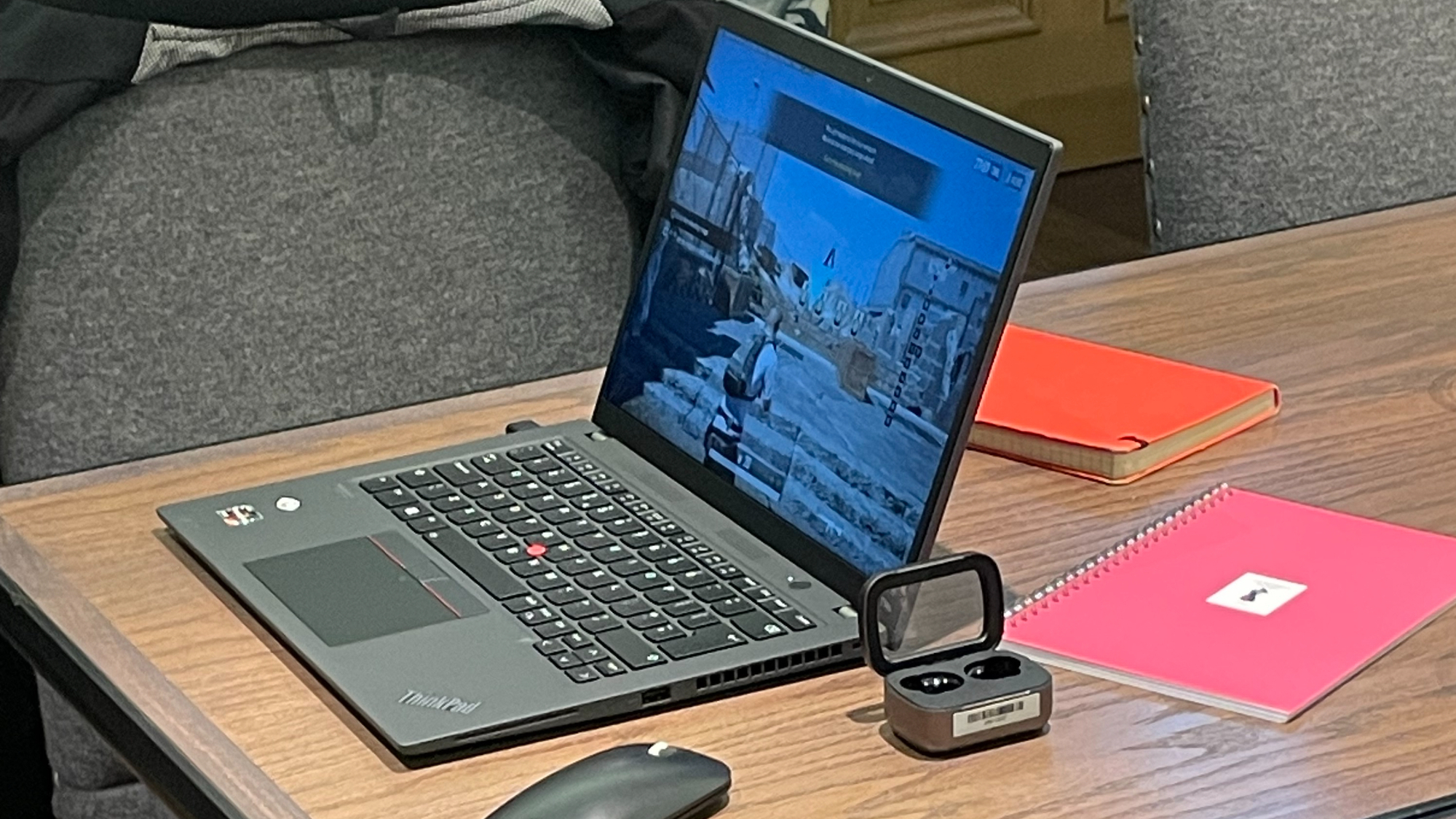I heard Abbey Road Studios brought to life through a Bowers & Wilkins in-car hi-fi in the Volvo EX90
New Abbey Road Studios Mode makes its debut in Volvo's all-electric SUV
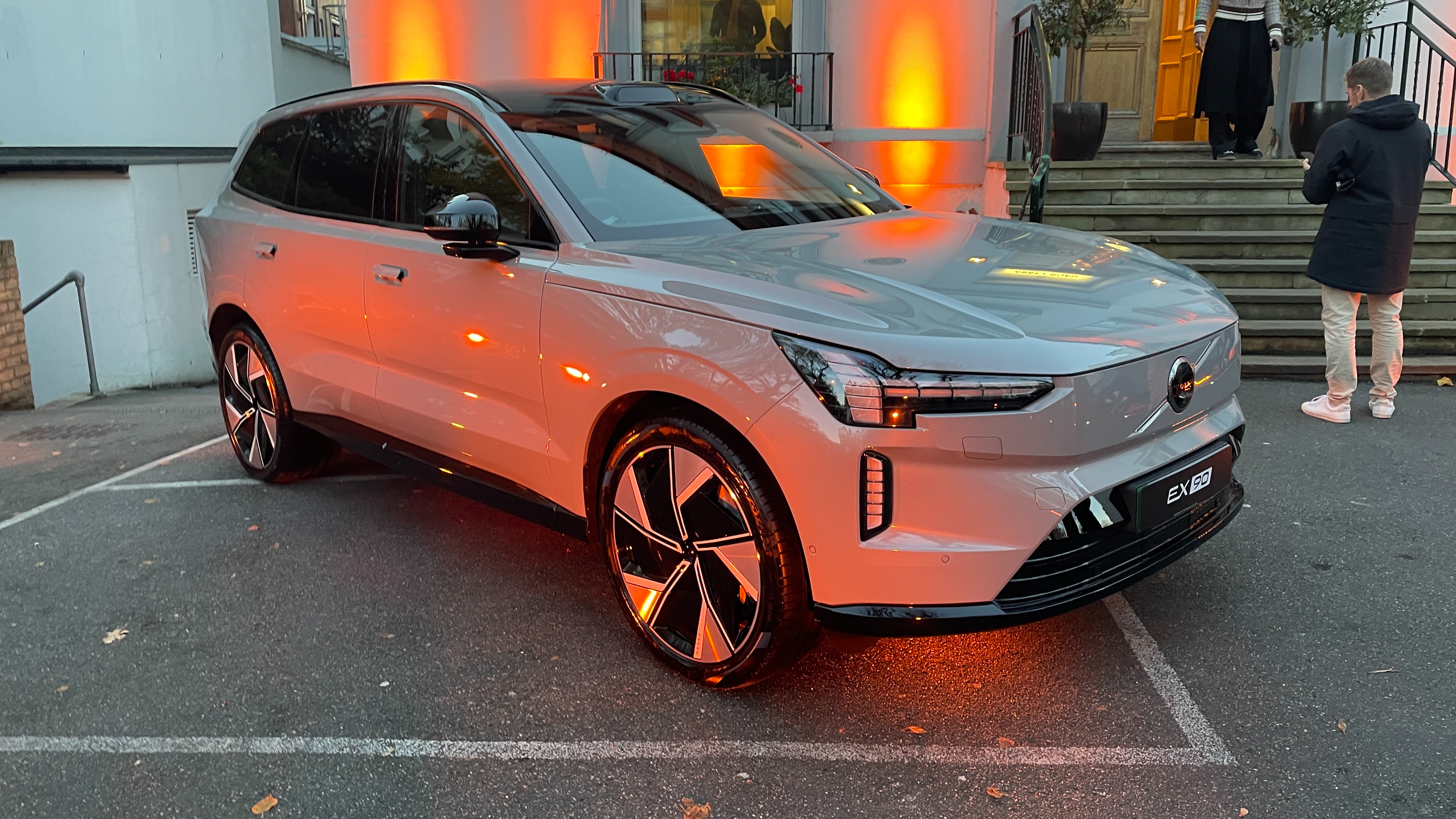
Bowers & Wilkins and Abbey Road have been working together closely for more than four decades, and their latest venture is designed to give people more of a glimpse behind the scenes of this world-famous studio.
It comes through B&W’s automotive partnership with Volvo. The Swedish giant has a new electric SUV, the EX90, which just happens to feature a 25-speaker sound system that uses various design technologies from Bowers & Wilkins, including its trademark tweeter-on-top design and Continuum cone technology which you will find engineered into many of its stereo speakers.
The most intriguing thing about this new system isn’t in the specific hardware, but the software. This sees users able to access a new Abbey Road Studios Mode which, according to the press release, has been designed to “capture the unique characteristics of Abbey Road’s studio spaces, equipment and processes to create a new listening experience.” So, how has this been achieved?
I was invited to the iconic Abbey Road studio to learn more about the mode and go hands-on with it in the Volvo EX90.
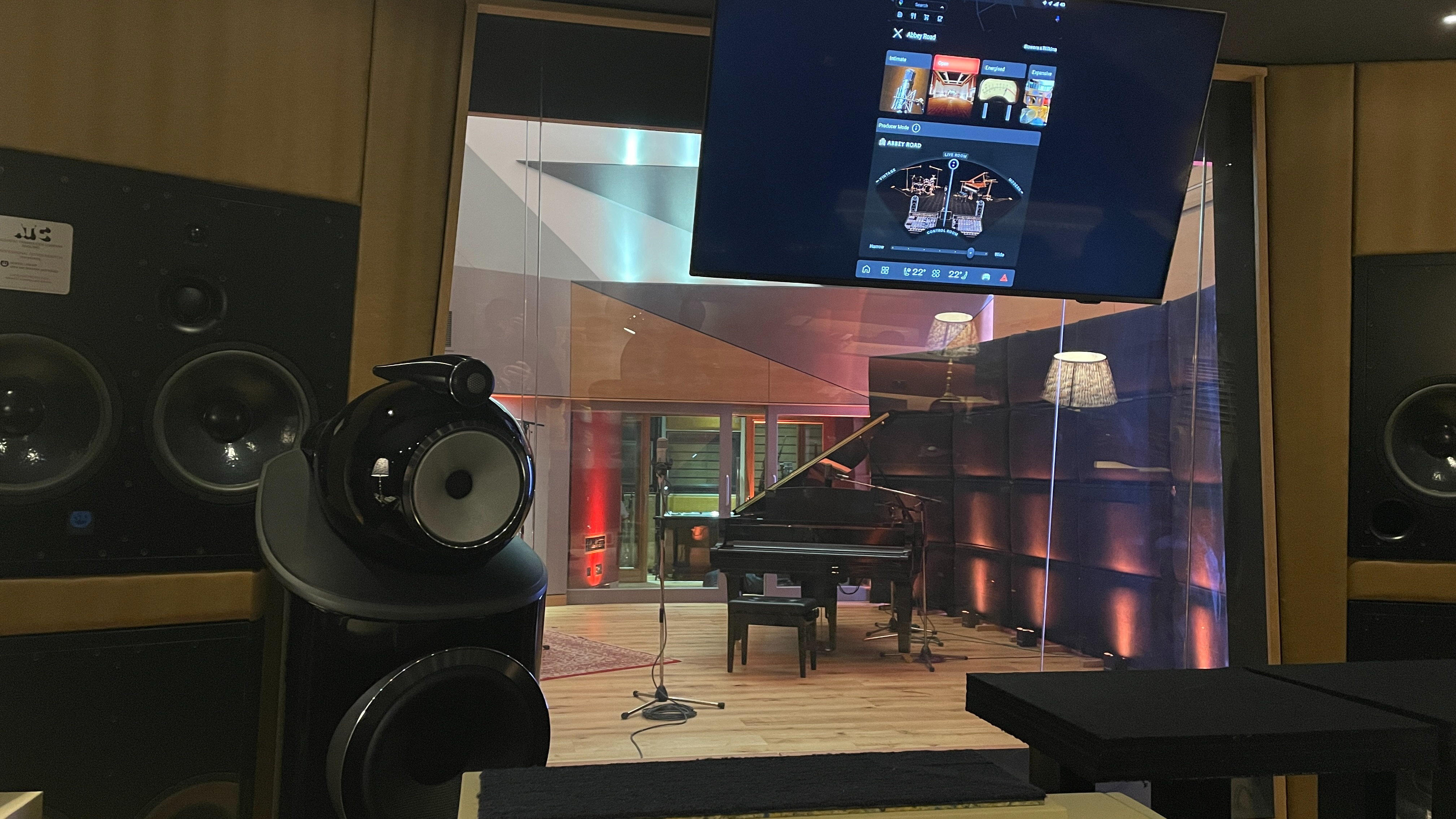
On hand to give us some background on the mode and the project behind it was Mirek Stiles, Head of Audio Products at Abbey Road. Mirek explains the thought process was not so much altering the music that you want to play through the system, more the environment you want to play it in.
“For me personally, the car is interesting from a sound point of view. It's like the perfect blank canvas because it's a known entity and you know where everyone is going to be sitting. On the other hand, it can be quite a claustrophobic environment acoustically as well.
“You're sat very close to speakers, and there are many speakers around you. We were thinking if we took some of the tools I've created that are used in the professional world, and use them to influence how we could introduce this sound into the consumer world, how could we take the sound outside of the cabin – how can we influence the environment of that cabin?”
Get the What Hi-Fi? Newsletter
The latest hi-fi, home cinema and tech news, reviews, buying advice and deals, direct to your inbox.
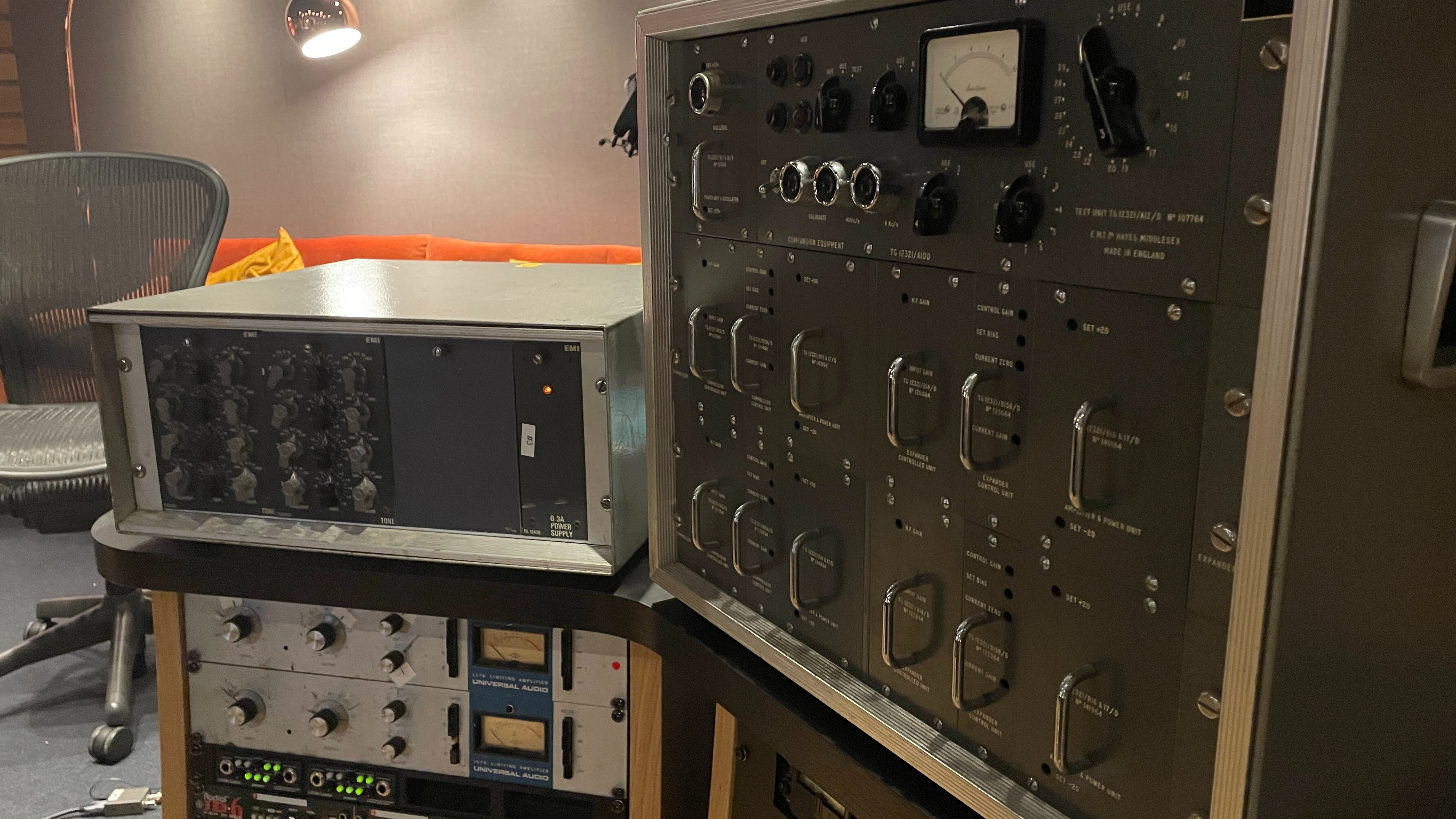
The tools Mirek is talking about are affectionately known as the ‘compounder’ and the ‘spreader’. Yes, we know they sound like two medieval instruments of torture, but they are in fact devices that were built specifically for use in the studios to help artists tweak the sound of their recordings.
The compounder is actually a Noise Reduction System which was originally patented by EMI in the early ’60s, “a good few years before Ray Dolby patented Dolby”, Mirek points out.
It was supposed to be used for classical recordings to reduce the perceived tape hiss.The pop engineers, on the other hand, discovered that if you just use the encode section and not the decode section, you got this lovely high end shimmery effect, like a high end EQ, but not an EQ.”
For this new sound mode, Abbey Road’s engineers have actually reverse-engineered the design for the Abbey Road Studios Mode so it can emphasize both high and low frequencies.
The ‘spreader’ is the second tool and is still used in the mastering rooms. It allows you to widen or narrow the stereo image. “We tried it in the car, and it just gave this lovely effect of being able to spread the speakers around.”
Mirek also mentions a couple of other ingredients used in the mode’s design. “We have also used original EMI EQ from the ’60s to give a base-level tuning of the overall car, and we've also created acoustic spaces based on the control rooms, the live rooms and the studios.”
Creating the acoustic spaces was done with the help of B&W’s acoustics development engineers such as Dominic Bowers (no relation to John Bowers). Dominic explains that this was a long and extremely thorough process that started back in 2020.
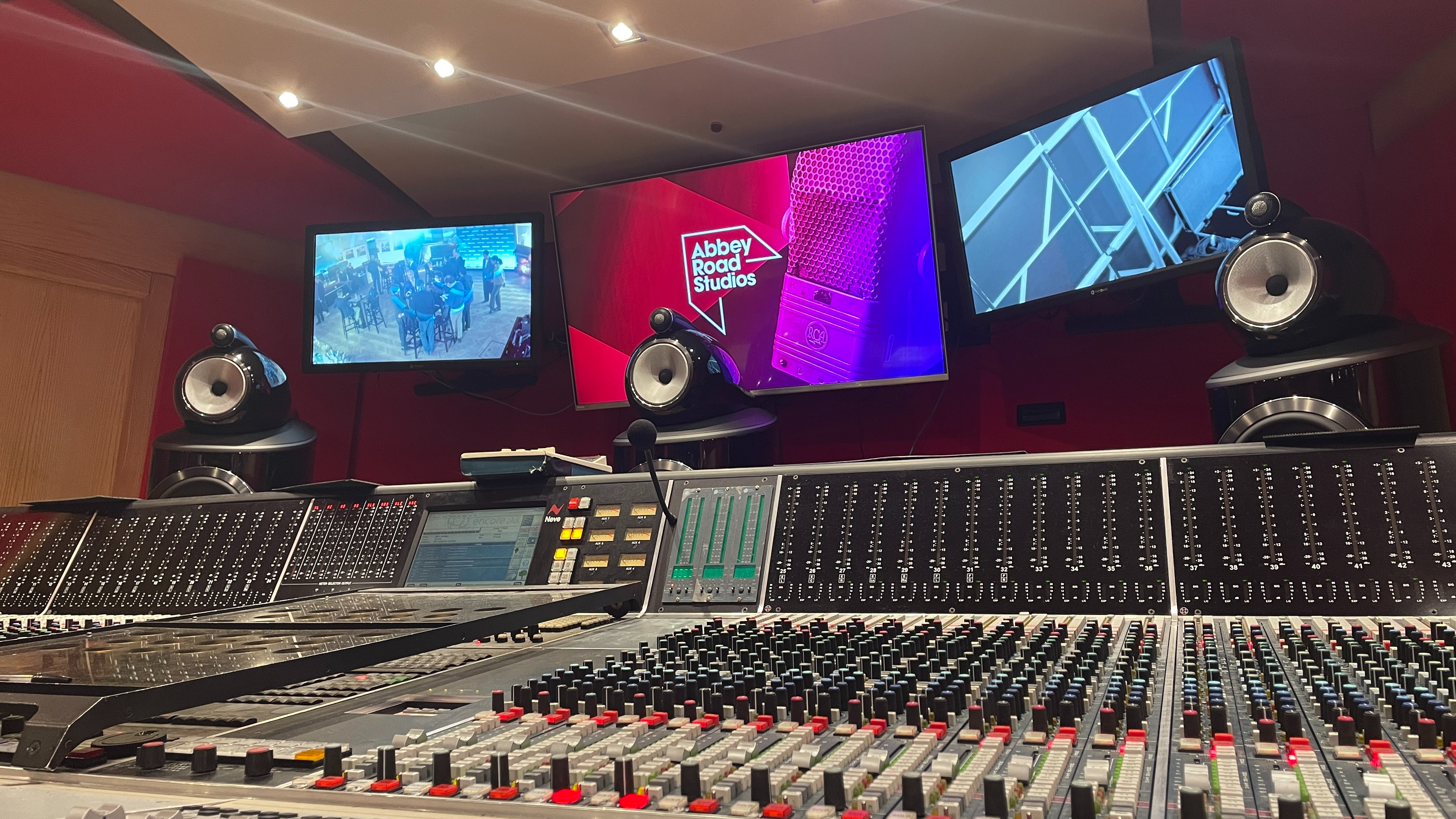
"During the pandemic, we came here and managed to capture over 60 measurements. Basically, the process involves using Bowers & Wilkins speakers and microphones in the different spaces, filling the room with acoustic energy, and capturing that energy with the microphones. What you get is an impulse response. And we use those impulse responses to map different spaces so you get information about size, how sound reflects off the different surfaces and so on. So we took that to the car.
“If you think how we actually captured the data to use to develop the app, we're actually using reverb content from the different spaces in Abbey Road as well. So it's not that we're taking it from any other spaces, it's actually mapped to the sonic fingerprint of this building.” Which sounds pretty cool to us.
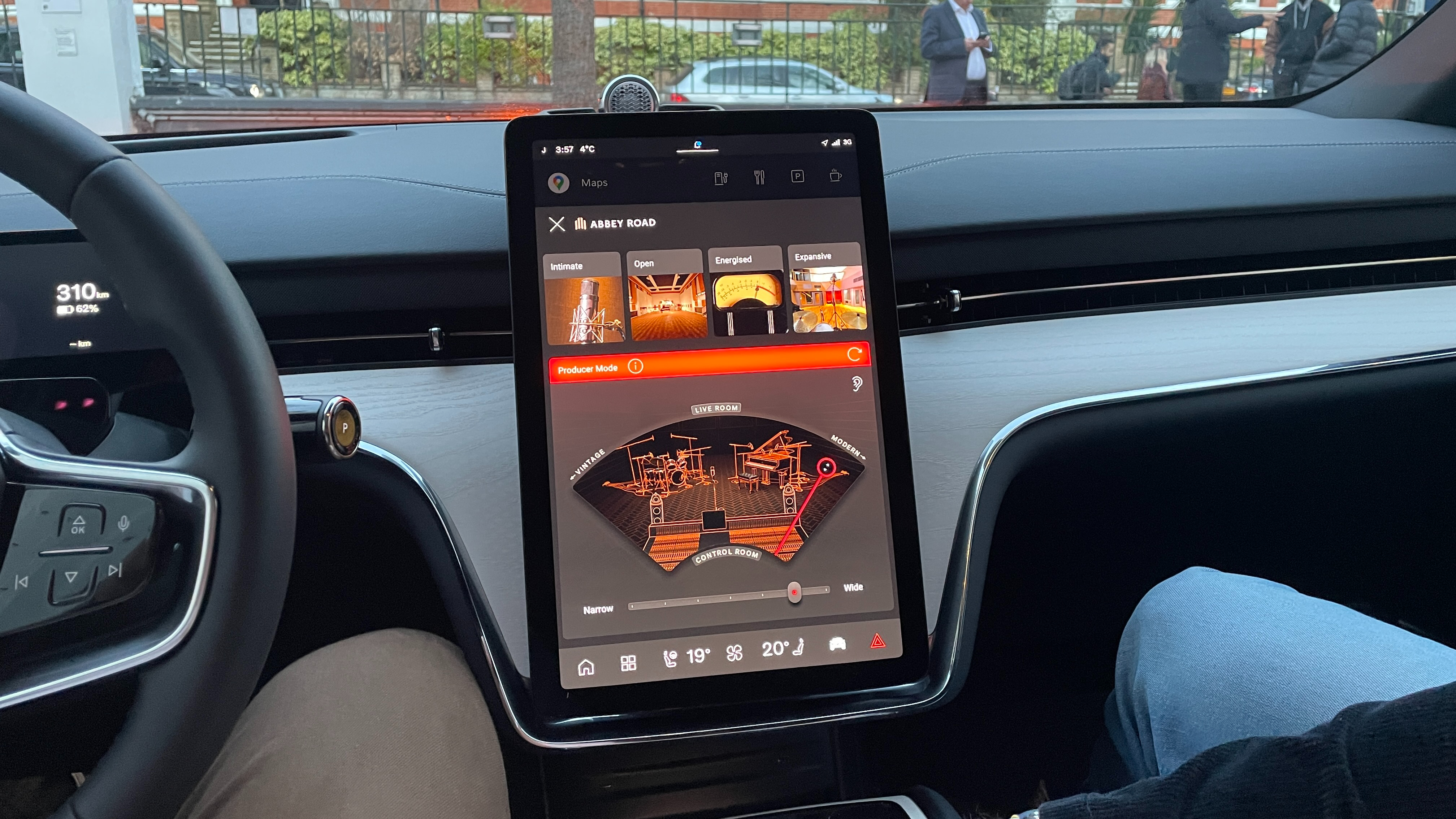
So how does it work in practice? We were ushered downstairs and into a Volvo EX90 which was conveniently parked outside the studios for us to have a demonstration of the system and the sound mode in action.
To welcome you to the Abbey Road Studios Mode, owners will be greeted by a brand new user interface. Graphically, it puts you right at the heart of the mastering process. For those who don’t want to get too involved, you have access to four different presets offering different flavours of sound depending on your preferred listening style: Intimate, Open, Energised or Expansive.
Volvo wanted to invite the user to be part of the tuning process – and realises that this might differ depending on what you might like listening to.
If you switch to Producer Mode, you can create your own bespoke listening environment. It’s as though you are sitting in a control room at the studio, but instead of having multiple banks of controls to slide your fingers over, you can use just the tip of one finger with the Volvo’s touchscreen to change the system’s sonic presentation.
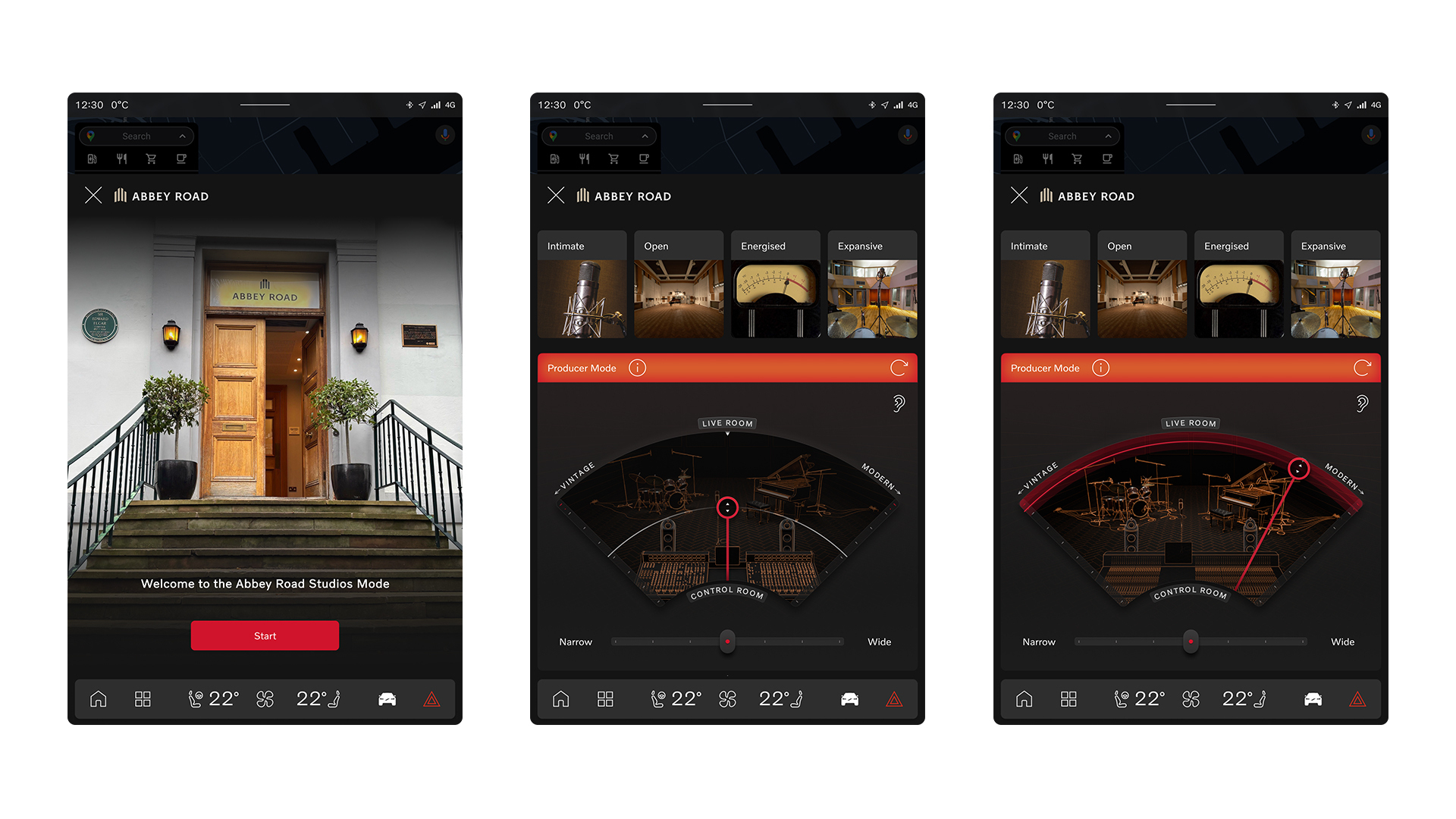
This gives you three degrees of freedom: you can slide up to change the room size, which adds more or less reverb, then slide left or right (think of it as the compounder) to shift the tonal balance from a vintage flavour to a more modern tone. Or you can work with the slider (think of it as the spreader) underneath the main interface, which alters the width and spread of sound.
If you slide your finger right up towards the edge, you will see a red zone appear on the interface. It’s not a no-go zone, it simply indicates that the effect this position has on the music might not be ideal.
During our demo of the system, we were played various genres of track, from intimate acoustic indie, to pounding techno, to lively jazz. And, in my opinion, the changes using the Abbey Road Studios Mode sounded less aggressive and more agreeable than just dialling the treble or bass up or down in a car’s traditional sound settings. I could certainly see this approach appealing to users who want a new, fun way to tinker with their car audio.
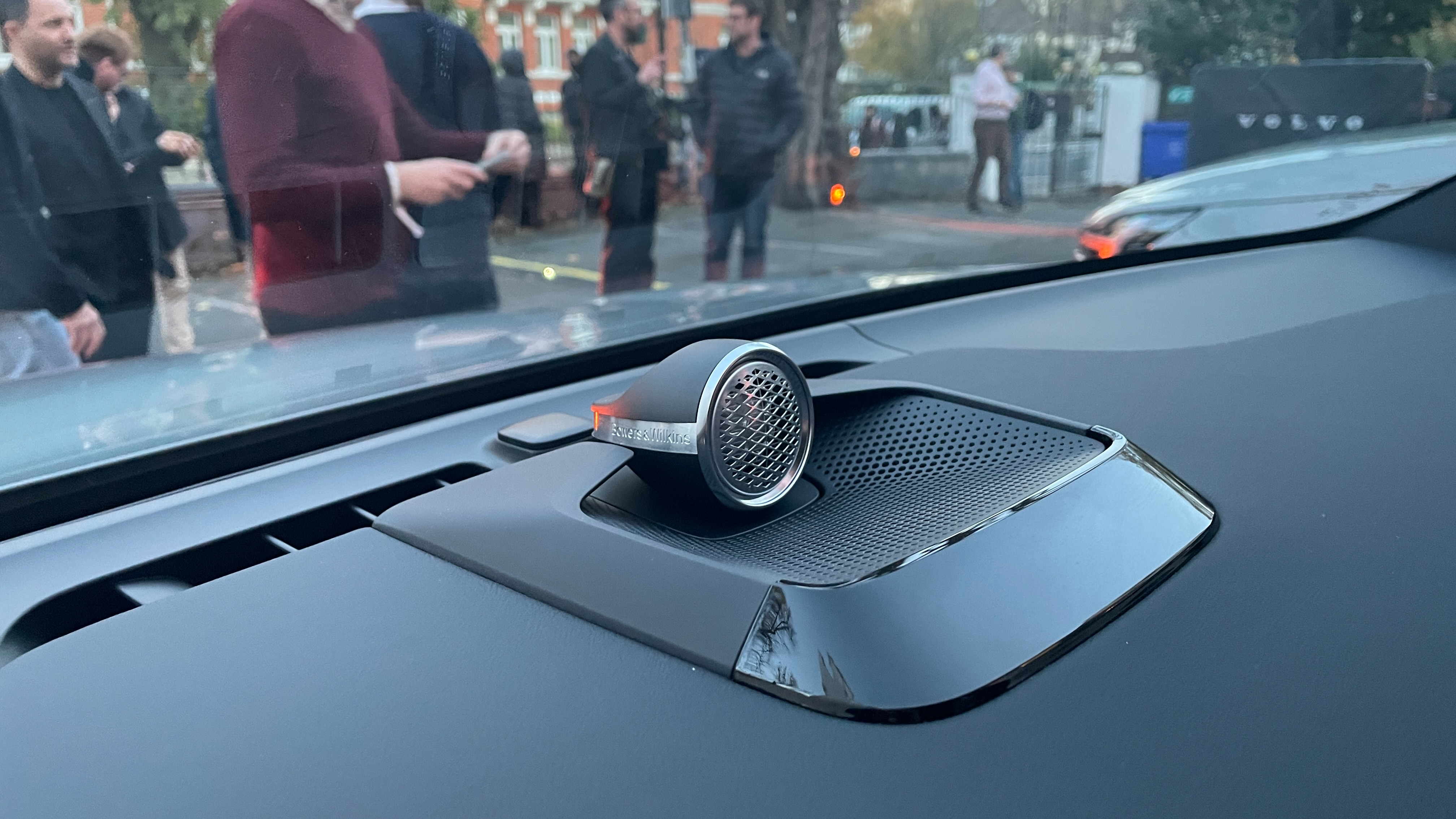
And the shift in width using the slider was very obvious – but not in a jarring way. I could hear it go from a slightly vaguer expanse of sound to a narrower and more focused image. Similarly, moving the setting from vintage to modern revealed a different emphasis on the recording, with the shift to vintage seeming to favour the texture of mids and highs. The closer you get to the modern area of the interface, the more the lower frequencies seem to be affected. And if you’re not a fan, you always have the option of listening to the music without all this extra processing happening in the background.
So, where could the Abbey Road Studios Mode go next? In the words of Dan Shepherd, VP of licensing and partnerships for Bowers & Wilkins, “this is just the beginning with this car and customer”. Because the system can be upgraded via OTA (over the air) updates, there could be a possibility that more rooms, more spatial controls, more ‘equipment’ to be added further down the line.
Volvo also offers a sound experience based on the Gothenburg Concert Hall – understandable given the company’s roots – but a lot of music genres in my opinion just don’t suit it. I’ll be interested to spend more time with EX90 and see if this mode is more suited to my listening preferences over a longer period of time.
MORE:
Bowers & Wilkins Diamond Surround Sound System (BMW iX) review
Andy is Deputy Editor of What Hi-Fi? and a consumer electronics journalist with nearly 20 years of experience writing news, reviews and features. Over the years he's also contributed to a number of other outlets, including The Sunday Times, the BBC, Stuff, and BA High Life Magazine. Premium wireless earbuds are his passion but he's also keen on car tech and in-car audio systems and can often be found cruising the countryside testing the latest set-ups. In his spare time Andy is a keen golfer and gamer.
-
Mr Maguire Whilst I don't want to rain on a parade (or p*ss on their chips) I think this is all a bit of nonsense. It is great that cars have a good sound but the idea that you can reproduce studio sound in anything other than a studio is delusional.Reply
In other news I look forward to any car manufacturer who can faithfully produce the acoustics of ACDC at Manchester Apollo on the Back in Black tour or Frank Sidebottom at the Hacienda. Why bother? -
Navanski Reply
Totally agree. This article has a definite whiff of bull's excrement.Mr Maguire said:Whilst I don't want to rain on a parade (or p*ss on their chips) I think this is all a bit of nonsense. It is great that cars have a good sound but the idea that you can reproduce studio sound in anything other than a studio is delusional.
I haven't been to Abbey Road studios to hear an album recorded and then compared the recording to my memories of the live sound. Nor I suggest has the author, if that's the correct description, had the opportunity to make this comparison.
Road noise and vehicle dimensions are limitations which prevent true fidelity.

